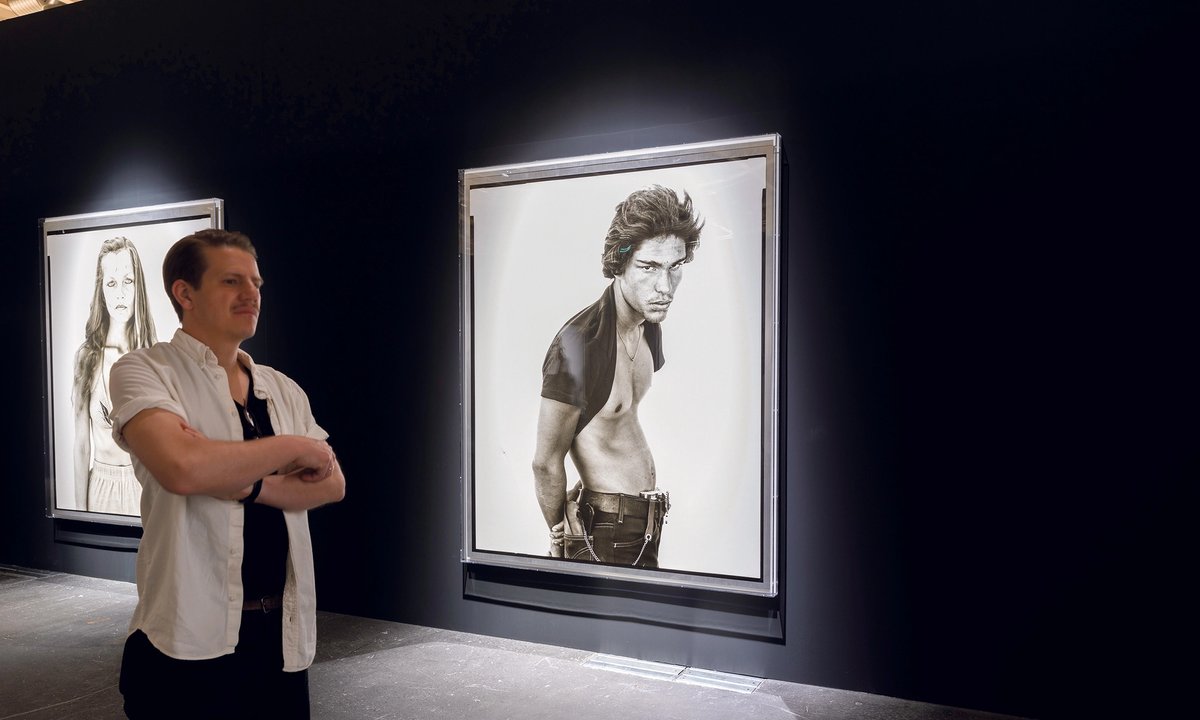[ad_1]
In times gone by, photography was marginalised at Art Basel—quite literally. The stands orbiting the Rundhof courtyard have always been packed full of painting. But almost all of the camera-based art was siloed into a corner of the main fair or, latterly, packed off to the smaller fringe event of Photo Basel, situated offsite at Volkshaus Basel.
With the exception of a few mainstays of classic Modern photography, like San Francisco’s Fraenkel Gallery and New York’s Howard Greenberg Gallery, few Art Basel exhibitors have traditionally found room for the medium. But, this year, a shift seems to be taking place. A deeper, broader and more diverse range of photography, across vintage, Modern and contemporary, is now on sale at the fair.
“Compared to the early days, collectors are infinitely more receptive to collecting works by photographers,” says Edwynn Houk, the director of the eponymous New York gallery. He is a specialist photography gallerist who is selling works at Art Basel by Man Ray, Henri Cartier-Bresson, Imogen Cunningham and Tina Modotti.
“Compared to the early days, collectors are infinitely more receptive”
Edwynn Houk, director of the eponymous New York gallery
Perhaps part of the reason for the shift lies in the gravitational pull of the mega-galleries. Hauser & Wirth’s representation of Cindy Sherman in 2021 was a bellwether event for photography. Sherman began making work in the 1970s and, at times, justifiably felt ignored by the mainstream art fairs. Suddenly, her work was selling on the same footing as Louise Bourgeois, Hans Arp, Philip Guston et al.
In March, Gagosian announced that it would represent Nan Goldin, an artist whose market has remained in the doldrums for more than a decade while she recovered from a prescribed opioid addiction. Gagosian has backed this up by bringing to the fair original prints by Francesca Woodman, the prodigious self-portraitist who died by suicide in 1981, at the age of 22. The gallery has also chosen a fairly unheralded series of works by Richard Avedon, called In the American West (1979-84), as its Unlimited offering.
The blue chips’ interest in photography “has been gradual, building probably over 15 years”, Houk says. “But the big galleries now take photography very seriously.” And there is a trickle-down effect. Smaller galleries also seem willing to take more risks, showing photographers or series that are yet to gain serious institutional pedigree, or that were ignored by previous generations.
New names are also being platformed. Thomas Zander is prominently displaying a large-scale contemporary work by the young, London-based Polish photographer Joanna Piotrowska, while Frankfurt’s Jacky Strenz Galerie has dedicated its stand to stark images by the late US photographer Lynne Cohen. “She was known, but she wasn’t a superstar, even in photography,” Strenz acknowledges. A number of Cohen’s photographs sold on the fair’s first VIP day, but the gallery declined to reveal how many.
Reappraisal under way
The increased interest in photography can perhaps also be attributed to the death of George Floyd, after which certain galleries started to platform works by overlooked Black photographers, mostly from the US. Gordon Parks, the first Black photographer to work on the famous Life magazine, was one artist to quickly be given a posthumous reappraisal, both institutionally and commercially. His works are on sale at Art Basel this year with New York’s Jenkins Johnson Gallery, among others.
Is this resulting in sales? So far, the more established names are cutting through. The London-based gallery Maureen Paley reported an early sale of a Wolfgang Tillmans image for $120,000, while Gladstone gallery sold a Robert Mapplethorpe photograph for $75,000. But a new work by the Iranian artist Shirin Neshat remains, at this stage, unsold by Gladstone. “There’s a huge amount of interest in her work and we will continue to have conversations,” gallery partner Caroline Luce says.
The big beasts look set to retain their interest in the art world’s traditional outsider. But the large galleries are unlikely to start getting behind young photographers any time soon. Why? Because the numbers do not work. “If the big galleries start to represent someone, they have to at least be a mid-career artist, if not beyond,” Houk says, “because of the economics”. Possibly because of its replicable nature, photography does not command the same prices as paintings. Until it does, photographers will still struggle to get the same hearing as the doyens of other media.
[ad_2]
